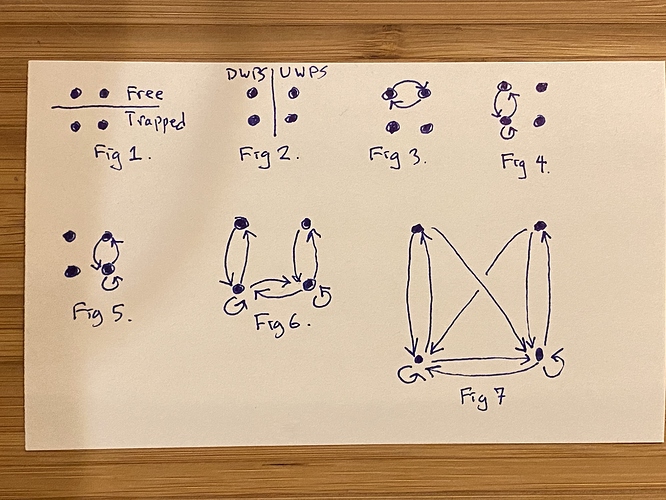I drew a figure that I though was interesting enough to share. I think that the pick can have four states (at rest), where it can be (a) trapped or free, or (b) DWPS or UWPS, hence 4 (= 2 ⨉ 2) combinations are possible. I draw arrows on the enclosed diagram where each arrow represents a single pick motion that hits a string and makes a sound, and one can follow the arrows around to see the legal pick activities.
Fig. 1 shows the two free states and the two trapped states.
Fig. 2 shows the two DWPS states and the two UWPS states.
Fig. 3 shows double-escaped picking (aka cross picking), note the pick slant flips back-and-forth (it seems to, but is that true?).
Fig. 4 shows DWPS, note the loop at the bottom, that’s sweeping (the pick stays trapped).
Fig. 5 shows UWPS.
Fig. 6 shows 2WPS, I think that the switch between them happens while the pick is trapped (at least for how I do it).
Fig. 7 shows two hypothetical new lines that I think exist, this is basically something like a rest stroke and then rotating one’s forearm to change the pick slant to get ready for an escape.
I think this is about right?


